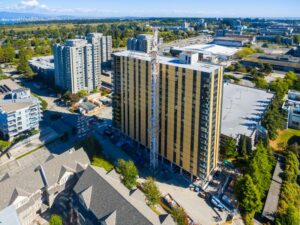By Laura Bohnert
The decision to upgrade the Town of Whitecourt to City status was discussed by Council at this year’s January 2017 Planning Session—but is a status update the best thing for the community?
Whitecourt has been eligible for City status since 2013, when the Municipal Census revealed the population to be over 10,000, at 10,574. The 2016 Federal Census similarly later recorded Whitecourt’s population to be 10,204.
In order for a municipality to qualify as a City, it must have a population of more than 10,000 people. However, the fact that Whitecourt qualifies doesn’t necessarily mean applying for City status is the right decision. Whitecourt’s current Town status is able to represent populations between 1,000 and an excess of 10,000—and of the 18 cities and 107 towns in Alberta, eight towns (Whitecourt excluded) have decided to maintain Town status despite having populations over 10,000.
Why the hesitation? Moving from Town to City status can have a lot of benefits for the community—but it can also pose a number of challenges, including the management of infrastructure and the implementation of city-specific bylaws, like those required to meet the City Transportation Act.
Claiming City status means assuming ownership of local highways and roadways, and that means taking responsibility for maintenance, improvements, and future construction – and that includes assuming responsibility for the maintenance of Highway 43.
The Province has recently stated that, until the Highway 43 bypass is constructed, the Government of Alberta will continue maintaining Highway 43 for the short-term, but Council Administration has pointed out that there is a long-term financial commitment at stake in the responsibility for local highways that is assumed following the upgrade to City status.
In addition to the fact that the City of Whitecourt would be responsible for the maintenance of Highway 43, it would also assume responsibility for its primary and secondary roadways, which would include a portion of Highway 32, service and municipal roadways (culverts included), controlled traffic intersections, a CN Rail crossing, a river crossing, and any future infrastructure development.
While switching to City status has its share of challenges, it also has a few strong benefits. For one, while most grant funding applications look to population rather than municipal status, many individuals consider a City status to be crucial to attracting business investments and tourism. During their review, administration could not find any franchises that required City status: “Franchises determine locations based on residential and commercial markets, high traffic routes, average income statistics, service area populations, and expansion opportunities,” the City Status Report reads. “That being said,” adds Legislative Manager Tara Gallant, “each franchise usually does its own extensive market and competitive analysis, and the term ‘City’ may make a community stand out to site selectors.”
Of course, it all comes back to infrastructure. Increases in tourist activity, business start-ups, and population growth all put pressure on the municipality’s infrastructure. Further maintenance as well as infrastructural developments will be required, as well as bylaw amendments and transportation updates. Gallant explains, “The municipality already plans, forecasts and budgets for community growth when it comes to maintenance and development of municipal infrastructure. The biggest impact of going to City status,” she concludes, “would be assuming highways and other infrastructure items currently owned and maintained by the Province—which would then be assumed by the municipality.”







More Stories
High-speed action, some trickery and huge hits mark the start of the Wolverines’ 2025 playoffexperience
Reminiscing with Residents: Spruceview edition with Jurgen Moll
A great ending to the regular season, with the post-season coming up next